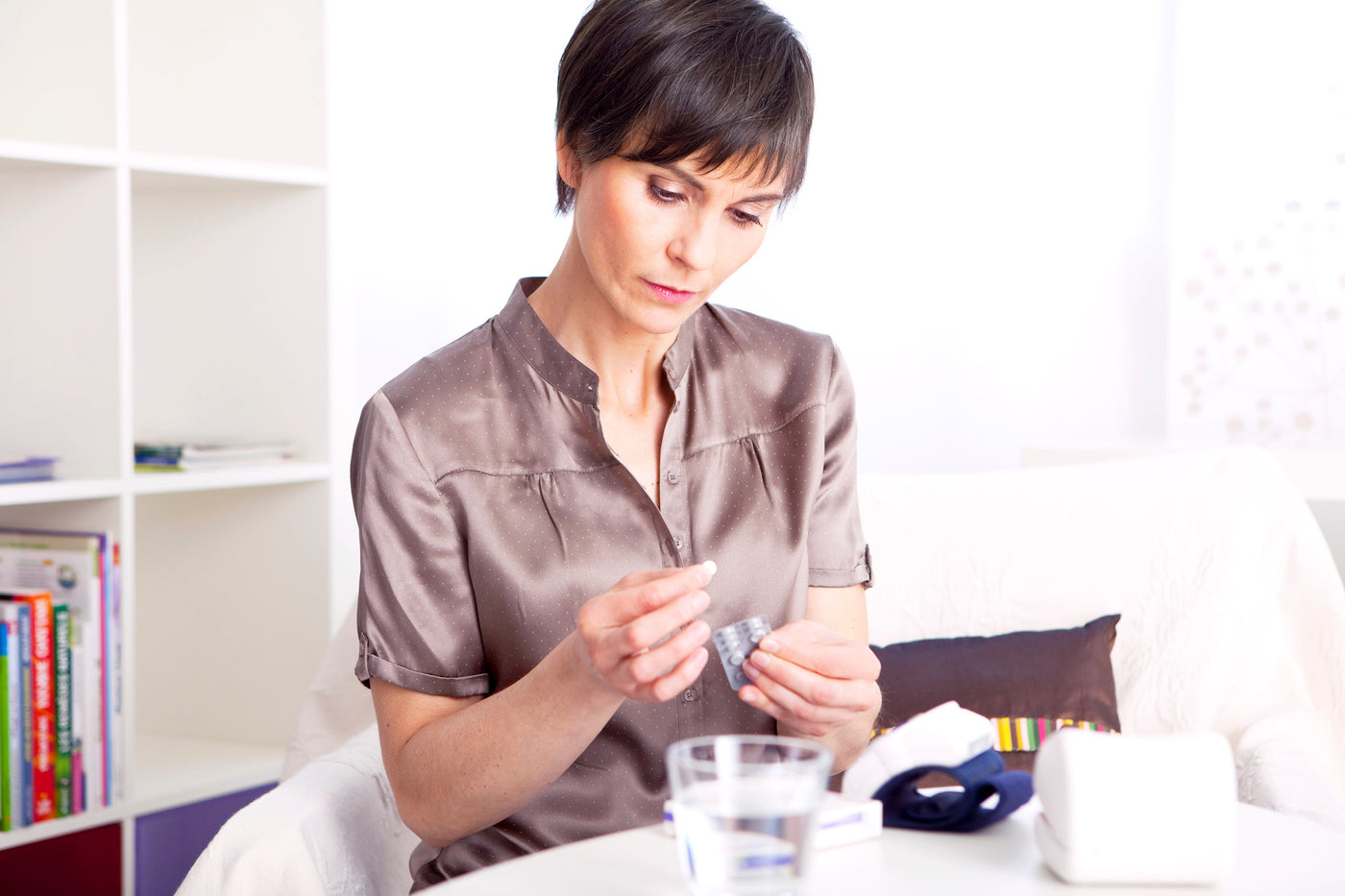
Hormone Replacement Therapy & Menopause: How Does It Work?
Menopause is a momentous time in a woman's life. However, along with it often comes uncomfortable symptoms like vaginal dryness, hot flashes, mood swings, and more.
There are various treatments to provide relief from these symptoms and one of the most popular is hormone replacement therapy (HRT). But just how effective is HRT, and are there other options that get the job done better?
What Is Hormone Replacement Therapy?
Hormone replacement therapy (HRT) is a treatment that releases hormones into the female body. As the name suggests, HRT involves replenishing the body’s supply female sex hormones, a process that can directly combat the changes that occur during menopause.
Estrogen and progesterone are the main hormones in a woman’s body that regulates reproductive and physical health functions.
When these hormones are lacking, as is the case during menopause, bodily changes like hot flashes, vaginal dryness, and mood swings can occur. The body is, in essence, missing the key substances it needs to maintain reproductive health and functionality. HRT aims to offset this imbalance, therefore reducing the frequency and severity of menopause symptoms in women.
What are the different types of HRT?
Hormone replacement therapy can look different depending on the problem it’s meant to solve. The main two types of HRT are estrogen therapy and combination therapy.
Estrogen therapy is recommended for women who have had a hysterectomy (surgical removal of the womb).
A doctor may prescribe estrogen therapy in the form of:
- Oral tablets: these are usually taken once a day with food to minimize the risk of side effects
- Estrogen patches: these stick to the skin of the abdomen and release hormones into the body. They typically need to be replaced every few days.
- Vaginal estrogen: products like tablets, cream, and vaginal rings may be specifically prescribed for vaginal dryness or utilized for more general symptom relief
- Topical estrogen: sprays, creams, and gels applied on parts of the body like legs or arms absorb into the skin to deliver a dose of hormones
Combination HRT, on the other hand, combines estrogen, progesterone, and progestin.
This type of HRT is typically best for women who still have their wombs intact because, when not balanced with progestin or progesterone, estrogen can stimulate growth in the uterine lining. This can increase the risk of endometrial cancer. Also important is the role of progesterone. Although it’s often prescribed as birth control, it can also contribute to relief from menopause symptoms.
The Risks & Benefits Of HRT
When using hormone replacement therapy to combat the symptoms of menopause, women may experience:
- Relief from hot flashes and night sweats
- Longer and better-quality sleep
- Reduced vaginal dryness and itching
- Less painful sex, and therefore more enjoyable intercourse
HRT works effectively, but it also carries various side effects that are associated with the hormones it uses.1 In fact, many women who consider HRT often find that its risks far outweigh its advantages.
What are some of the side effects of HRT?
Examples of consequences HRT can cause in the short-term include:
- Vaginal bleeding, or “breakthrough bleeding”
- Depression
- Nausea
- Headaches
- Breast swelling or tenderness
- Bloating
- Fluid retention
- Weight gain
- Mood swings
Even if you experience an improvement in these side effects over time, you may still not be in the clear.
Potential long-term risks associated with HRT for women under 60 years of age include the rare increased risk of:
- Breast cancer
- Endometrial hyperplasia
- Endometrial cancer
- Gallbladder disease
- Venous thromboembolism (VTE), or blood clots in the veins2
- Stroke
Before opting for HRT, it’s important to seriously consider the potential consequences it may bring. Alternative solutions that still work to address the shift in hormones in the body without potentially causing harm may be ideal.
Getting Started With HRT
The first step to beginning treatment with HRT is to talk to your physician. Menopause symptoms manifest differently for every woman, so what works for another woman may not work for you.
However, you must consider not only the symptoms you’re having, but also the side effects of HRT and the possibility of developing long-term health conditions.
Although HRT is one treatment option for menopause symptoms, it may not be the safest; in many cases, it may cause more harm than good.
HRT for Relieving Menopause Symptoms: Final Thoughts
Overall, HRT may be beneficial for some, but its side effects and possible long-term risks may make it a less-than-ideal option for women looking to tackle menopause symptoms once and for all.
Resources:
1 (2019). The 2022 hormone therapy position statement of The North American Menopause Society. Menopause: The Journal of The North American Menopause Society, Vol. 29(7), 767-794.
2 Centers for Disease Control and Prevention. (2022, June 9). What is venous thromboembolism? Centers for Disease Control and Prevention. Retrieved October 28, 2022, from https://cdc.gov/ncbddd/dvt/facts.html

